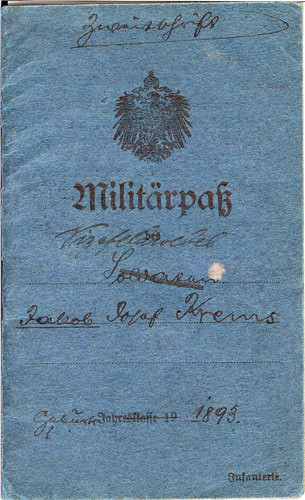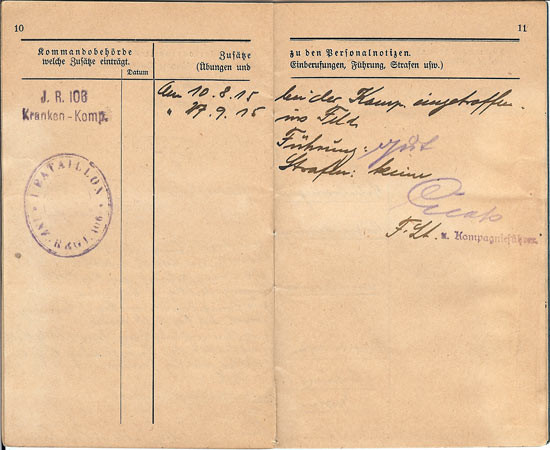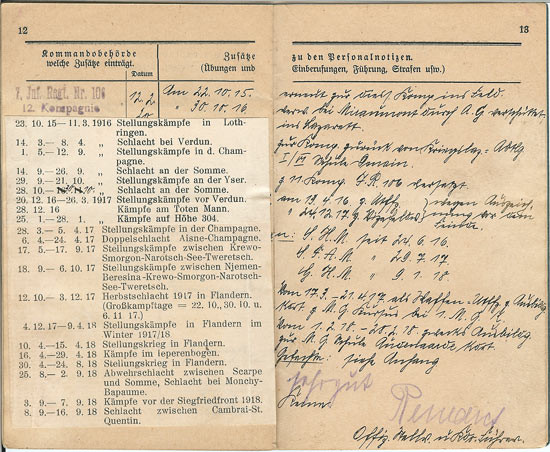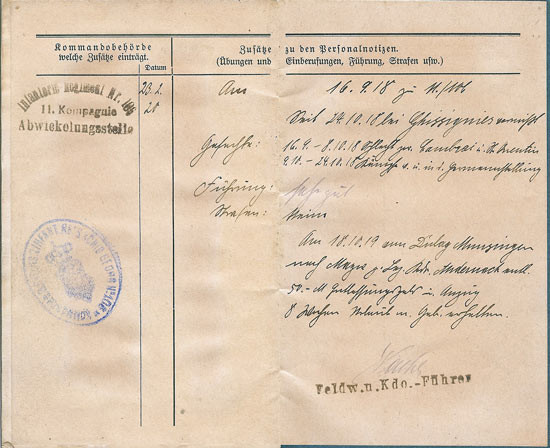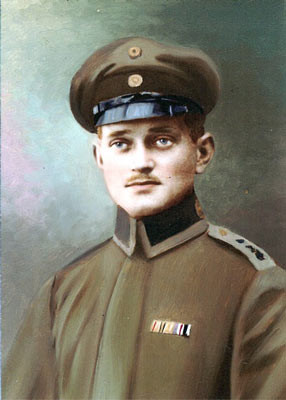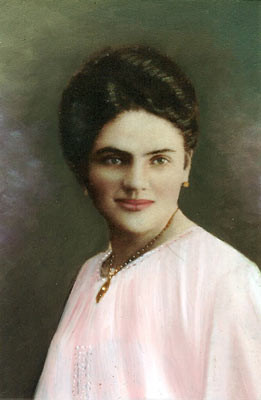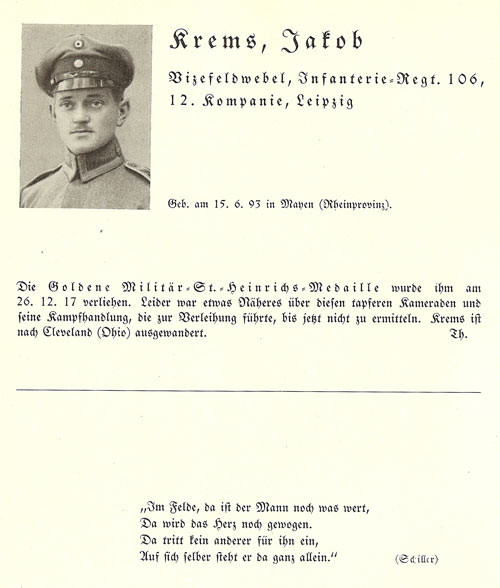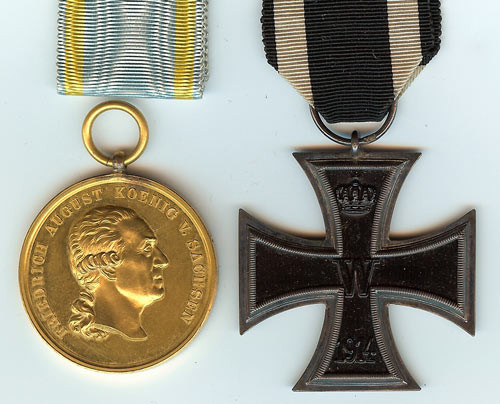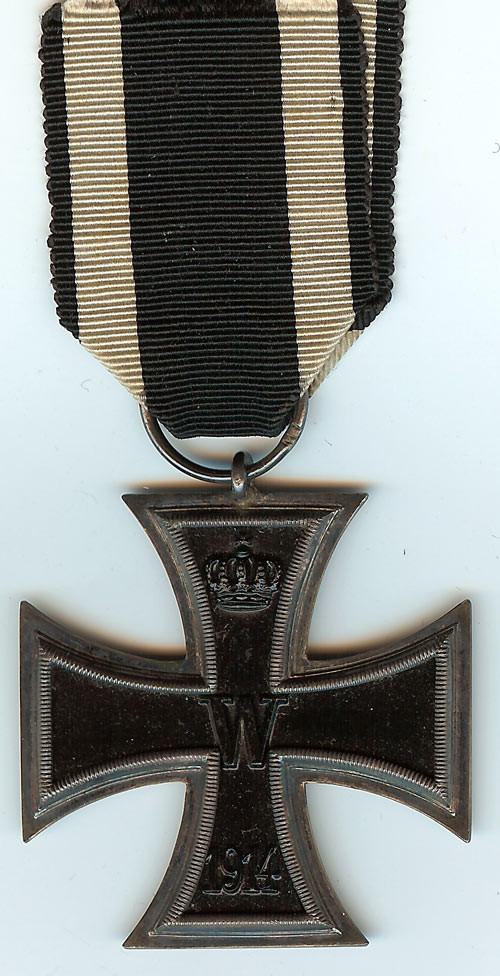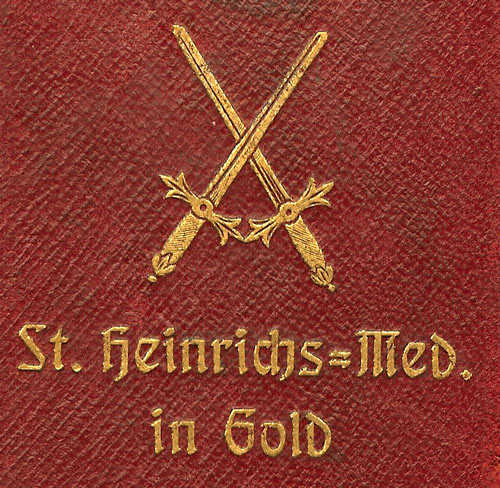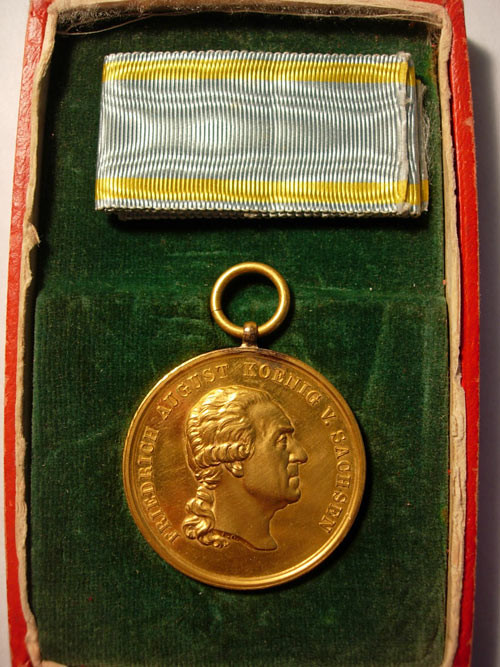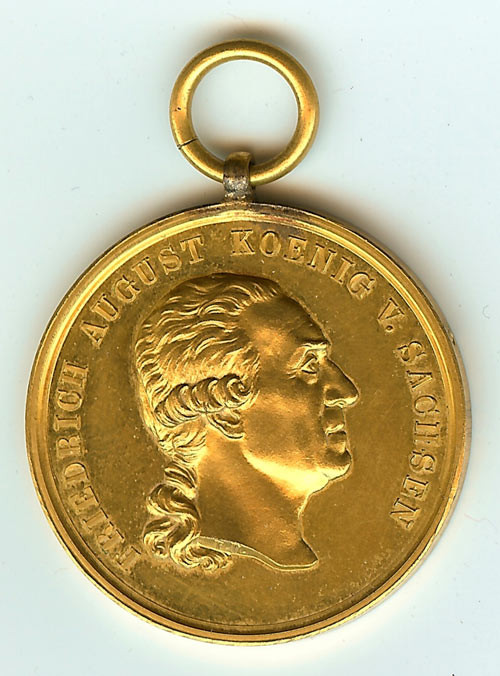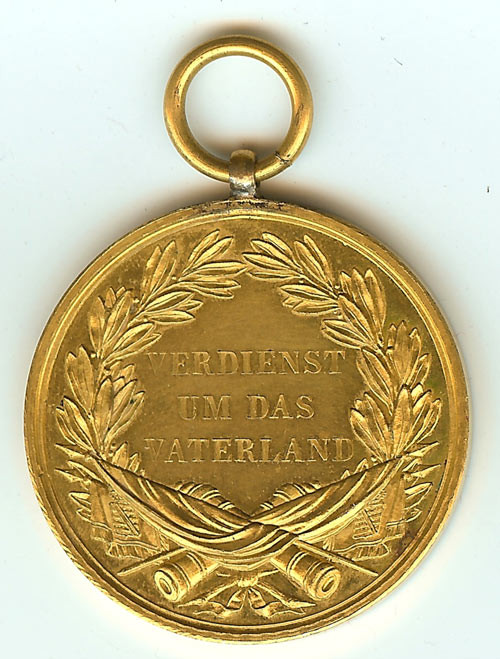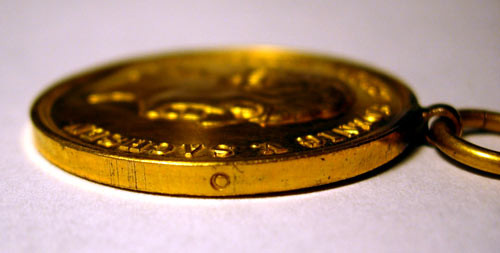|
published in German language in the German Order Collector Society's magazine "Orden & Ehrenzeichen #61"
Jakob Josef Krems was born on June 15, 1893 in Mayen, Rheinprovinz, Germany. He enlisted in the Saxon Infantry and was sworn-in on October 3, 1914. On November 15, 1914, he was assigned to the Royal Saxon 7th Infantry Regiment King George No. 106, 12th Company.
Combat begins
For Jakob Krems, his combat experience started on November 19, 1914 when he joined his Company in the field at Ypern. His combat career however did not get off to a smooth start. While involved in trench warfare in Flanders starting in early January, he fell ill on three occasions and was in the hospital. Finally, after a full-recovery, he re-joined his unit in the field again on March 4, 1915. Fortune would soon change for Krems however and he would be hospitalized for a different reason. On August 10, 1915, he was involved in fighting in the Battle of Narew-Bober, was wounded, and was awarded the Iron Cross 2nd Class. On August 12, 1915, he was evacuated to a hospital for treatment of his wounds where he remained until September 27, 1915. This time, it was not until October 22, 1915 that he re-joined his Company in the field. On April 3, 1916, Jakob Krems was promoted to Unteroffizier. On June 24, 1916, Krems was awarded the Saxon Military St. Henry Medal in Silver for his actions on June 15, 1916 while fighting in trench warfare at Champagne. As of October 30, 1916 however, he was back in the hospital for treatment as a result of injuries received while fighting on the Somme. On December 12, 1916, he returned to his Company in the field. On December 28, 1916, he was involved in the fighting at Toten Mann, and in early 1917, his unit was involved in the fighting at Verdun. From January 25, 1917, until January 28, 1917, he was involved in the extremely intense fighting at Höhe 304. From March 17, 1917, until April 21, 1917, Krems was the Weapons NCO of the 1st Machine Gun Company. On July 29, 1917, Krems was awarded the Saxon Silver Friedrich August Medal. At this time, he was involved in the trench warfare in the area of Njemen-Beresina-Krewo-Smorgon-Narotsch-See-Tweretsch on the Eastern Front. On December 24, 1917, Jakob Krems was promoted to Vizefeldwebel because of his previous actions before the enemy. On January 9, 1918, Jakob Krems was awarded Saxon’s highest honor for an enlisted soldier, the coveted Saxon Military St. Henry Medal in Gold, for his actions on December 26, 1917 while fighting in trench warfare in Flanders From February 1, 1918, until February 28, 1918, Krems received further machine gun training. On September 16, 1918, Krems was assigned to the 11th Company of Infantry Regiment No. 106. He then fought in the Battle at Cambrai-St. Quentin from September 16, 1918, until October 8, 1918. On February 20, 1920, Jakob Krems was discharged at Leipzig. He was now a brave and highly-decorated ex-soldier in need of employment.
Figure 1: Cover of the Militärpaß belonging to Jakob Krems.
Figure 2: First page of battle entries in the Krems Militärpaß listing his award of the Iron Cross 2nd Class on August 10, 1915.
Figure 3: Second page of battle entries in the Krems Militärpaß showing his hospitalization after being wounded.
Figure 4: Third page of battle entries in the Militärpaß which also has entries for the other awards that Jakob Krems received.
Figure 5: Fourth page of battle entries in the Krems Militärpaß
After the First World War
At some point, Jakob Krems married Anne Kehrig, and after the War, Anne gave birth to their daughter Hildegard. Jakob had worked as a stone-cutter, but the poor economy at the time undoubtedly made things difficult for the Krems family. In 1927, the Krems family made the bold decision to emigrate to the United States.
Figure 6: Undated colorized photographs of Jakob Krems in uniform and his wife Anne Krems.
On St. Patrick’s Day in 1927, the Krems family arrived in Cambridge, New Jersey. They then traveled to Cleveland, Ohio and joined relatives who had emigrated before them. Jakob found work as a butcher. In the 1930’s with the NSDAP in power, Jakob was viewed as a possible enemy of the United States, as many German-Americans were. Customers came to his shop and told him that they had been questioned by the FBI regarding him. Reportedly, in the 1930’s, Jakob was contacted several times by German authorities and asked to return to Germany to serve the new regime, but declined to do so. The 1936 publication “Ehrenbuch der Inhaber der Sächsischen Goldenen Militär-St. Heinrichs-Medaille” lists Jakob Krems on page Nr. 178. It shows a photograph of him in uniform (the same photograph as shown in Figure 6). Unfortunately, the description of the action for which he was awarded the Gold St. Henry Medal is not listed as it was not researched for the book: “Leider war etwas Näheres über diesen tapferen Kameraden und seine Kampfhandlung, die zur Verleihung führte, bis jetzt nicht zu ermitteln”. There is simply a quotation of Schiller from the Reiterlied listed on the page (as shown below).
Figure 7: The “Ehrenbuch der Inhaber der Sächsischen Goldenen Militär-St. Heinrichs-Medaille” entry for Jakob Krems.
whatever Jakob Krems did to be awarded the Gold Military St. Henry Medal, it was undoubtedly of an extremely brave and extraordinary nature. With only 150 total awards made during the World War, only 1 in 7,296 Saxon soldiers received this award. It is interesting to note that the citation for Jakob Krems was the only one excluded from the book, as the citations for all of the other 149 recipients were included. Perhaps Krems requested that the Reiterlied be printed under his entry, and his request was granted. Jakob Krems owned a copy of this book which is in the possession of his family to this day. It is interesting to note that there were two other recipients of the Gold Military St. Henry Medal listed who had emigrated to the United States. Reportedly, Jakob and Anne used to take their daughter Hildegard to the German Cultural Gardens in Cleveland on Sundays to read the inscriptions on the Goethe-Schiller statue to keep the German language fresh in their minds. Jakob Krems, the brave ex-soldier, passed-away in 1958 and is buried in Cleveland, Ohio.
Surviving awards
The Gold Military St. Henry Medal awarded to Jakob Krems is shown below. It was struck from bronze and gilded. The die-maker’s initials “F.U.” (Karl Christian Friedrich Ulbricht) are present at the neck of the bust of Friedrich August. There is a circular punch-mark on the rim of the medal at approximately 3 o’ clock (see Figure 15). This punch-mark denotes that this is an original mint-struck and officially awarded bronze-gilt medal. The slightly dark discoloration seen at the top of the medal, where the suspension ring was soldered to the top of the medal, was caused by oxidation of the solder over time, which has shown through the gilding. The medal weighs 18.1g without the ribbon. This medal is housed in the red case in which it was awarded. There is gold blocking on the lid with crossed swords and the inscription “St. Heinrichs=Med./in Gold”. A piece of original ribbon for this medal was found in the case. In 1914, there were 110 medals struck in gold by the Saxon Royal Mint. In 1915, there 15 medals struck in gold. In 1917, there were 50 medals struck in gilded bronze. In 1918, there were 60 medals struck in gilded bronze. Thus, during the World War, there were total of 125 medals struck in gold, and 110 struck in gilded-bronze. Of the medals struck, 97 of the gold medals were awarded from 1914 until the end of 1917, and 53 of the gilded bronze medal were awarded from the end of 1917 through 1918. Therefore, the gilded-bronze version of this medal, although not as aesthetically pleasing, nor as intrinsically valuable as the gold version of this medal, is a numismatic rarity.
Figure 8: The surviving awards of Jakob Krems.
Figure 9: The Iron Cross 2nd Class awarded to Jakob Krems.
Figure 10: Inscription on the lid of the case of the Gold Military St. Henry Medal.
Figure 11: The Gold Military St. Henry Medal in its case.
Figure 12: Obverse of the Gold Military St. Henry Medal awarded to Jakob Krems.
Figure 13: Reverse of the Gold Military St. Henry Medal awarded to Jakob Krems.
Figure 14: Circular punch-mark on the edge of the Gold Military St. Henry Medal denoting that the medal was struck in bronze and was gilded.
The Iron Cross 2nd Class which was awarded to Jakob Krems has survived, along with its original ribbon. In addition, two pieces of ribbon (yellow with two light-blue side stripes) for his Silver Friedrich August Medal were also found in the Gold Military St. Henry Medal case. There is no indication that Jakob Krems ever received a Wound Badge, although it seems that he certainly would have qualified for one. The Militärpaß which belonged to Jakob Krems has fortunately also survived as seen above. Unfortunately though, it is not known what became of his Silver Military St. Henry Medal, his Friedrich August Medal in Silver, or his other documents regarding his awards and military service.
I wish to express my gratitude to Mr. James Fasnacht of Cleveland, Ohio for his assistance in the preparation of this article.
References
|
||
